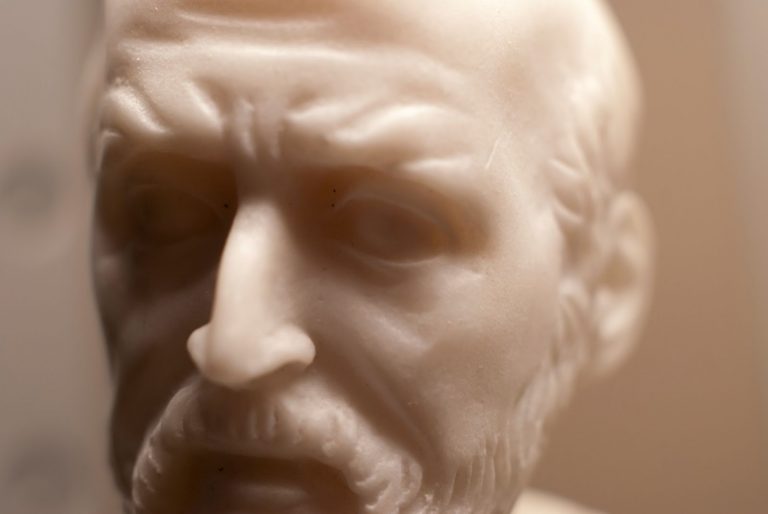It is often said, “one’s appearance reveals one’s heart.” Since ancient times people have connected one’s looks with their character. Some went so far as to link facial features with criminal tendencies, while others relied partly on appearance to be an indicator of health. Many also attribute luck, or lack thereof, to facial characteristics.
Physiognomy is the practice of assessing a person’s character or personality from their outer appearance — especially the face. Present in many cultures, physiognomy dates back to ancient times. The saint-like Indian Siddhars as far back as 600 BC called the practice samudrika lakshanam, while what the Chinese call mian xiang (face reading) goes back even further to the Zhou dynasty. By the fourth century B.C., the Greek philosopher Aristotle often referenced theory and literature regarding the relationship between appearance and character.
Everyone knows that true beauty comes from within, but up for debate is whether inner beauty is connected with one’s outer appearance. The eyes, the brow, and the mouth are key features one looks to in assessing character. The form of these features often plays a role in first impressions and judgment of a person’s demeanor, be it positive or negative, accurate or false.

Telling Features
Eyes are said to be the window to the soul. While this maxim by Shakespeare is quite profound, Fremont College’s guide to body language takes a pragmatic approach to explain how the eyes and mouth can be interpreted. The guide suggests that shifty eyes may be a red flag. “Inability to make direct eye contact can indicate boredom, disinterest, or even deceit – especially when someone looks away and to the side. If a person looks down, on the other hand, it often indicates nervousness or submissiveness.”
Dilated pupils indicate concentration, so while it’s difficult to detect, the degree of interest one shows in whom they are with can be measured in the size of their pupils, according to the guide. Vinita Mehta Ph.D., of Psychology Today, agrees with this assessment in her report 3 Things Your Eyes Tell the World, and further adds that eye color in Caucasians can offer insight into a person’s level of competitiveness, while the degree of whiteness in the eyes is perceived as a measure of health and attractiveness.
Success
You are now signed up for our newsletter
Success
Check your email to complete sign up
Fremont’s guide also addresses the mouth, “a genuine smile suggests that the person is happy and enjoying the company of the people around him or her. A fake smile, on the other hand, is meant to convey pleasure or approval but suggests that the smiler is actually feeling something else…Tight, pursed lips also indicate displeasure, while a relaxed mouth indicates a relaxed attitude and positive mood. Covering the mouth or touching the lips with the hands or fingers when speaking may be an indicator of lying.”

The brow is discussed in Phil Mutz’s What Your Eyebrows Are Really Saying About You published in Little Things. According to Mutz, pointed eyebrows indicate power and control. These people tend to be leaders and dominate their relationships. They may be fierce, but they can also be inspiring.
Mutz asserts that a person with eyebrows that go up in a “V” is likely to be someone with a severe nature whom others don’t want to mess with, while straight eyebrows say “what you see is what you get.” Straight-brow individuals are perceived as trustworthy and people tend to confide in them. Rounded high-arched eyebrows indicate a theatrical nature. People with this feature like to be the center of attention, and they attract others with their ability to entertain.
The physiognomy of historic figures
What was once taken as self-evident in ancient times was largely discredited in the late 19th century when its cousin phrenology (the study assessing mental abilities from the size and shape of the cranium) fell out of favor. In the meantime, many notable figures were influenced by the practice. While Leonardo da Vinci dismissed physiognomy as a “false” chimera with “no scientific foundation,” he did believe that facial expressions could indicate personality traits, such as irascibility being detectable in deep furrows between the eyebrows
Physiognomy may have caused some consternation for Socrates, when a follower of the practice suggested that, based on his appearance, the philosopher was likely to exhibit intemperance, sensuality, and violent bursts of passion. These traits were so unlike Socrates’ behavior that his students accused the physiognomist of lying. To set matters straight, Socrates admitted that he did possess these vices but controlled them through strong self-discipline.
According to New Science, Charles Darwin was nearly rejected in his application as an “energetic young man” to serve as a gentleman companion aboard the Beagle, because of his nose. A strong believer in physiognomy, Captain Robert Fitzroy was convinced that “no man with such a nose could have energy.” Had not the strength of his brow saved the father of evolution, history might have been a different story today.
Recent research
Despite its loss of popularity in the late 19th century, recent research has revived physiognomy’s credibility somewhat. A 1966 study was conducted by psychologists at the University of Michigan, where 84 undergraduates who had never met before were asked to “rate each other on five personality traits, based entirely on appearance, as they sat for 15 minutes in silence” (Journal of Personality and Social Psychology, vol 4, p 44).
Results showed that the assessments made by the observers were more correct than not for extroversion, conscientiousness, and openness. Similarly, research in the 1990s indicated that “three elements of personality in particular – power, warmth and honesty – can be reliably inferred.”
New Scientist magazine reported in 2009 that “a study of 90 ice hockey players found a statistically significant correlation between a wider face—a greater than average cheekbone-to-cheekbone distance relative to the distance between brow and upper lip—and the number of penalty minutes a player received for violent acts like slashing, elbowing, checking from behind, and fighting.”
As a mark of its usefulness, physiognomy is now being applied commercially. In 2020, a study on the use of consumer facial images for marketing research purposes concluded that personal information extracted from facial images provided a means for targeting ads on social media.
To improve your lot in life, you need to improve your character
Whether or not we choose to believe that our character can be read in our appearance, and to what degree, there is a well-established “attractiveness halo” according to New Scientist.
“People seen as good-looking not only get the most valentines but are also judged to be more outgoing, socially competent, powerful, sexually responsive, intelligent and healthy. They do better in all manner of ways, from how they are greeted by other people to how they are treated by the criminal justice system.”

Our physical characteristics are not carved in stone. While we cannot change the shape of some features so readily, we can definitely change what they say. One who finds fault with everyone and everything will have a disagreeable countenance. If he can instead look within to discover and address his own shortcomings, he will be better able to forgive others of theirs. As he becomes more friendly, his harsh appearance will soften. A friendly person is always more appealing than a grouch, and will naturally draw good things into his realm.
A person with poor luck is likely at odds with the universe, always wanting to control things beyond his control, and forever fighting against nature. Considering that we are all just part of a larger whole, and that whole is only a small part of an even larger whole, we can look at things from a broader perspective, let go of arrogance, and adopt humility. When one behaves in keeping with the way of the universe, naturally things shape up more favorably.
Anyone with a winning smile is attractive, and will have that so-called “halo.” A genuine smile is easy to achieve with a big heart that is light and joyful. Being charitable and kind is the best way to improve the heart. By helping others, we can break the bonds of selfishness that keep a heart small and cold. When the heart expands, we can find joy in many things, thus enriching our lives with blessings.













